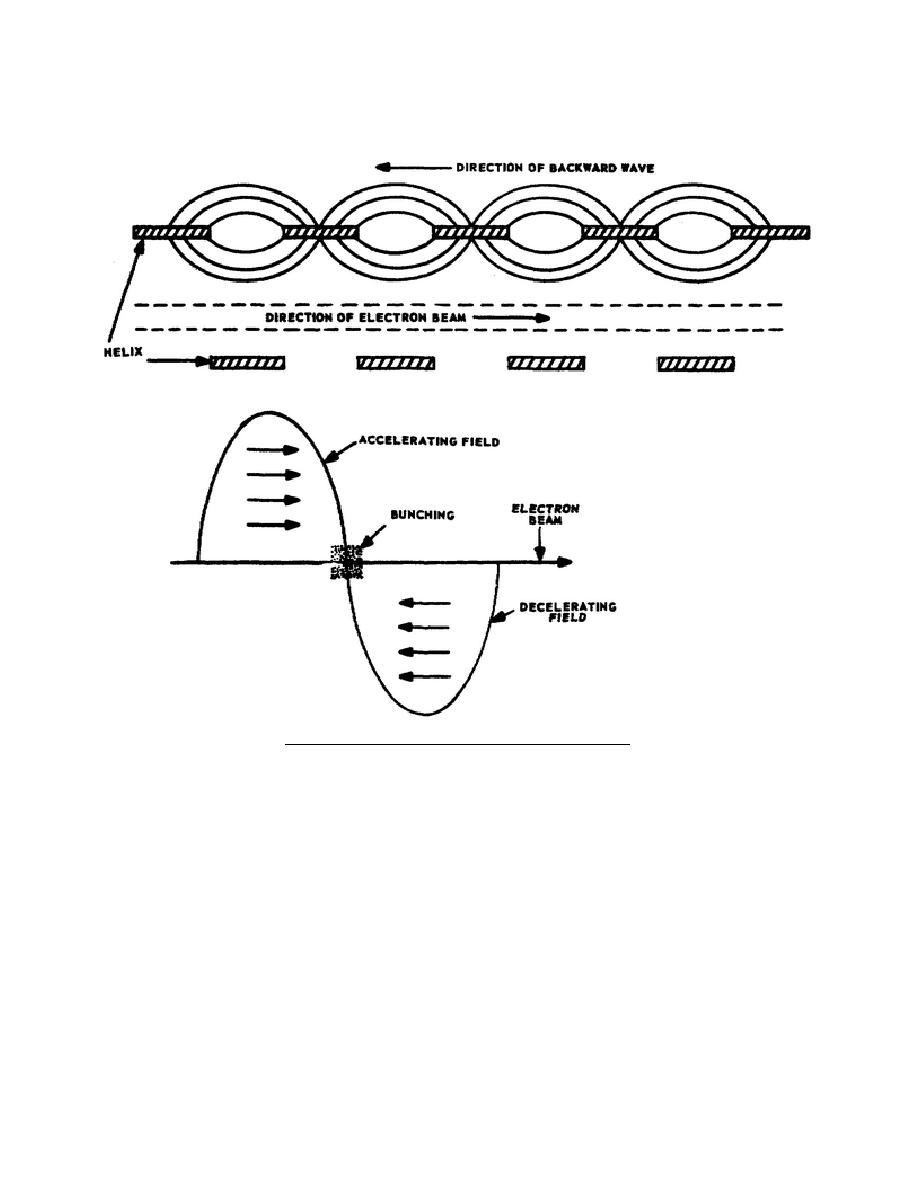
axial length of the delay line so that the electric field, E, is uniform over this length. The electric field and the
magnetic field are crossed (at right angles to each other).
Figure 26. RF fields in a backward-wave oscillator.
e. When the electron beam leaves the electron gun, the magnetic field gives the beam a forward motion
(toward the collector). The electric field exists between the delay line and the sole, and causes the electron beam
to travel parallel to the delay line and the sole. As the electron beam comes under the influence of the RF fields
on the delay line, bunching will start. As the electrons move down the tube, they also tend to move toward the
delay line, giving up energy to the RF signal on the delay line. The RF output is taken from the cathode end of
the tube because the RF energy in the delay line travels backward from the terminating impedance, opposite to the
axial motion of the electron beam. There are many frequencies present on the delay lines but the one that will be
amplified because of bunching is determined by either the sole voltage (which determines the strength of the
electric field, E) or by the acceleration voltage which controls the velocity of the electrons.
344 L1
28


 Previous Page
Previous Page
